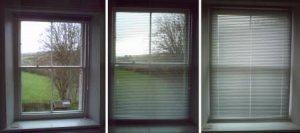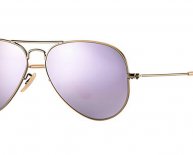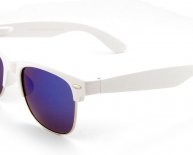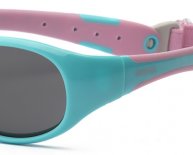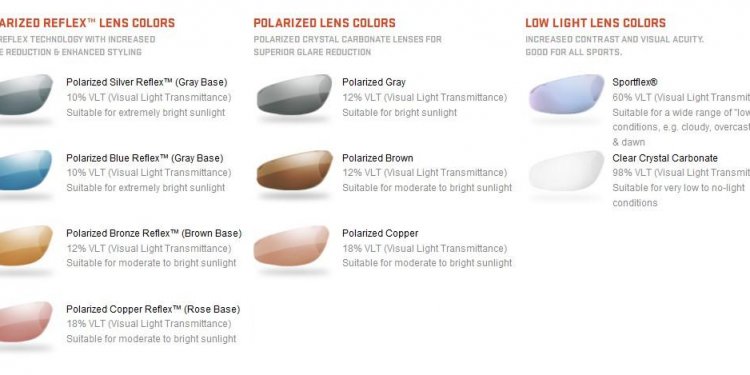
Sunglasses with Pictures on the lenses
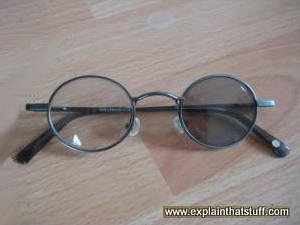 Advertisement
Advertisement
Wearing eyeglasses can often be a pain. If it's raining, you're wiping water off the lenses; if it's humid, the lenses mist up; and if it's sunny, you don't know whether to wear your normal glasses or your shades and you may have to keeping switching between the two! Many people who wear eyeglasses have found a solution to the last of these problems by changing over to photochromic lenses—sold under popular brand names such as Transitions® and (some years ago) Reactolite Rapide. They look clear indoors or in poor light, but in sunlight they darken automatically and effectively turn your normal glasses into shades. It's pretty cool technology—but how exactly does it work?
Photo: Definitely darker. I took my photochromic eyeglasses out into the light with the left lens covered, then returned a few minutes later to take this photo. The lenses darken much more given time, but how effectively they work depends on the ambient temperature and how old they are.
How normal sunglasses work
Photo: Right: Ordinary sunglasses are simple light filters: by restricting the wavelengths of light that get through, they effectively reduce the quantity of light passing through as well—giving you a darkened picture of the world.
Normal sunglasses work by blocking out some of the light in one of two ways. Most of them are really just colored filters: they let through only light of a certain color (the color of the lens) and block out the rest. Since only a fraction of the light gets through, you see a darkened (and colored) picture. The other type of sunglasses use polarization. Light travels in a wave motion—a bit like the waves on the sea.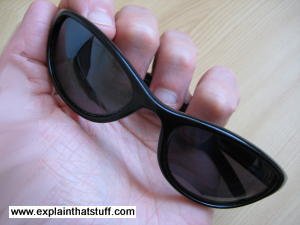 But where ocean waves vibrate only up and down, light waves wriggle in every direction. Polarizing lenses are a bit like slits that let through only light waves vibrating in a single direction. So, just like colored lenses, they let through only a fraction of the light and you see a darkened view of the world (typically grayer, rather than colored).
But where ocean waves vibrate only up and down, light waves wriggle in every direction. Polarizing lenses are a bit like slits that let through only light waves vibrating in a single direction. So, just like colored lenses, they let through only a fraction of the light and you see a darkened view of the world (typically grayer, rather than colored).
Photochromic lenses are completely different, because they work by reacting to ultraviolet (UV) light—the light that's just too blue for our eyes to see. Indoors, there is hardly any UV light (ordinary glass windows generally filter it out) so photochromic lenses remain clear; outdoors, where there's quite a bit of UV light coming down from the sun, they darken.
Photo: Left: Polarizing sunglasses block all light waves except those vibrating in one direction. So if you hold two pairs in front of one another and slowly rotate one of them, you'll see the overlapping lenses gradually turn black, then lighten again.
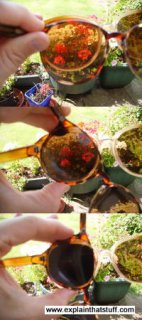 Who invented photochromic lenses?
Who invented photochromic lenses?
First let's cut through the jargon. The word "photochromic" comes from two Greek words: "photos" meaning light and "chroma" meaning color. So photochromic simply means something that changes color in response to light. Photochromic glass has been around since the early 1960s, when it was invented by William H. Armistead and Stanley Donald Stookey of Corning Glass Works (their US patent 3, 208, 860 describing the idea, titled Phototropic material and article made therefrom, was filed on July 31, 1962). In those days, photochromic glass worked a bit like pieces of old-fashioned, photographic film. Film darkens because it contains silver-based crystals that clump together when light falls on them. Early photochromic lenses contained similar silver crystals and darkened in a similar way: when light hit them, some of the silver crystals changed into microscopic bits of silver.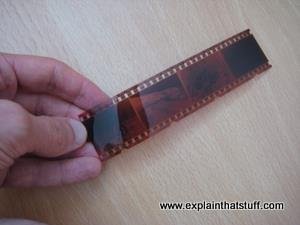 How can you see through lenses made with opaque silver? As Armistead and Stookey explain in their original patent, only tiny quantities of silver crystals are needed (less than 0.1 percent by volume), and each crystal is less than 0.1 microns (one ten millionth of a meter—or about 100 times thinner than a human hair) in diameter. Unlike photographic film, which darkens permanently, the photochromic lenses could change back again and clear when the light level fell back to normal. In the 1970s, the British Pilkington glass company helped to popularize photochromic lenses by introducing brands called Reactolite and Reactolite Rapide (according to the US Patent and Trademark Office, these two trademarks were applied for in the United States in 1978 and both have since been cancelled).
How can you see through lenses made with opaque silver? As Armistead and Stookey explain in their original patent, only tiny quantities of silver crystals are needed (less than 0.1 percent by volume), and each crystal is less than 0.1 microns (one ten millionth of a meter—or about 100 times thinner than a human hair) in diameter. Unlike photographic film, which darkens permanently, the photochromic lenses could change back again and clear when the light level fell back to normal. In the 1970s, the British Pilkington glass company helped to popularize photochromic lenses by introducing brands called Reactolite and Reactolite Rapide (according to the US Patent and Trademark Office, these two trademarks were applied for in the United States in 1978 and both have since been cancelled).
Photo: Early photochromic lenses contained silver compounds (such as silver chloride) and reacted to light much the same way as old-fashioned photographic film, like this. Unlike film, the reaction was reversible: the lenses soon lightened again.
How modern photochromic lenses work
Modern photochromic lenses tend to be plastic and instead of silver chemicals they contain organic (carbon-based) molecules called naphthopyrans that react to light in a slightly different way: they subtly change their molecular structure when ultraviolet light strikes them. In this altered form, they soak up more ordinary light as it tries to pass by (technically, we say they have a different absorption spectrum), which is what makes the lenses darken. Imagine lots of molecules suddenly darkening inside a clear lens. It's a bit like closing the blinds in front of your window on a sunny day: as the slats turn, they progressively block out more and more light.
Photo: Molecules inside photochromic lenses cut off light like rapidly closing blinds. As the molecules change their structure, they absorb more of the light passing through, and that's what darkens your lenses.
You might think all of this would take quite a bit of time, but photochromic lenses respond remarkably quickly. About half the darkening happens within the first minute and they're cutting out about 80% of sunlight within 15 minutes.
